Hello and welcome to another edition of That is Neat, Patrick. What follows is a collection of things Paddy found Neat this week.
Pub Jugs
Pub Jugs, also known as Whisky Jugs, were first created as a promotional tool by distillers as ways to advertise their products in the pubs where they were used. When I first saw the below below pub jug so graciously gifted to me by my sister, I had initially assumed they were used to decant whiskey from the bottle and then into your glass as you please. I thought that was a bit bold of an idea as I know that I definitely should not be in charge of allocating mt own whiskey. As it turns out, the pub jugs were used for water when drinkers wanted to add some water to their drams.
Distilleries contracted the manufacturing of the jugs to notable ceramic houses such as Royal Doulton and Wade Ceramics. As the pub jug is more commonly found in antique shops rather than pubs nowadays, they have become desirable collector items.
Ortolan Bunting
The Ortolan is a bird in the bunting family Emberizidae. They are found in most European countries and in Western Asia, reaching as far north as Scandinavia and into the Arctic Circle. One European country where they are now very rarely found is France. This is because the French, being French, decided that this small unassuming bird could be used in a gourmet dish. Now, birds are eaten pretty regularly by people, and all are generally prepared the same way. We generally like to butcher the bird in (hopefully) a humane way, then cook and eat the different parts of the bird. Maybe have some white meat, maybe some dark. The usual. With that being said, the French decided to go in a different direction for the Ortolan.
The Ortolan is caught by a net, and placed into a darkened cage. While in the cage they are fed millet and other grains until they double in size. After they bulk up, they are held upside down in a vat of Armagnac brandy until they are drowned. They then marinate for a time in the same brandy, which feels disrespectful, until they are plucked and cooked for seven minutes in their own fat. The then insane Frenchman (redundant statement) then places the entire bird into their mouth feet first and eat them whole. Whether or not you eat the head or larger bones is up to the consumers discretion. The mentalluy unwell gourmand (redundant) does this with a napkin or towel drapped over their head to hide from God while performing such a decadent and disgraceful act.
The French seemed to realise that this was a truly horrible practice and banned the hunting of Ortolans in 1999. This ban was poorly enforced and the Ortolan population fell 30% between 1997 and 2007. The hunting of the Ortolan was banned across the EU in 2007 and the French government pledged to enforce the ban. Somehow, the Ortolan population is still in decline.
Neat Video
Something to think about.
ECHL Team Names
The ECHL, or East Coast Hockey League, is a minor pro developmental hockey leach that acts as a farm system to both the AHL and NHL. I have never seen an ECHL game, but I am still a big fan. This is because many of the teams in the league have some decidedly creative. There’s the standard North American sports team names like the Trois-Rivières Lions and Cincinnati Cyclones, but there are also some real gems in the league. My favourites are as follow:
Florida Everblades
Based in Estero, Florida, the name is a fun play on the Florida Everglades, and Blades. Like an ice skate. Good stuff.
Greenville Swamp Rabbits
Based in Greenville, South Carolina. What’s a swamp rabbit? I don’t know, but his stick is a carrot so that’s neat.
Orlando Solar Bears
Based in Orlando, Florida. The logo is just a chill guy.
Wheeling Nailers
The Wheeling Nailers are based in Wheeling, WV. It’s just a fun name to say.
The Image Wikipedia Used for the “Hangover” Article
She’s literally me.
The Day After by Edvard Munch was painted between 1894 and 1895. It was decried by critics as portraying a drunken prostitute. This is not likely the case as when Edvard Munch painted prostitutes, they were typically portrayed as being grotesque.
Edvard Munch (1863–1944) was a Norwegian painter and printmaker, widely regarded as a pioneer of Expressionism. His work often explored themes of existential angst, death, love, and emotional turmoil, which reflected both his personal struggles and the broader uncertainties of modern life. He was influenced by Symbolism and the psychological theories of his time, making his art intensely introspective and evocative. Munch's unique style was characterized by bold brushstrokes, vivid colors, and distorted forms that conveyed raw emotions. His most iconic work is likely The Scream. The work was inspired by a personal experience when Munch felt "a scream passing through nature" during a walk and has become a visual representation of human anxiety.



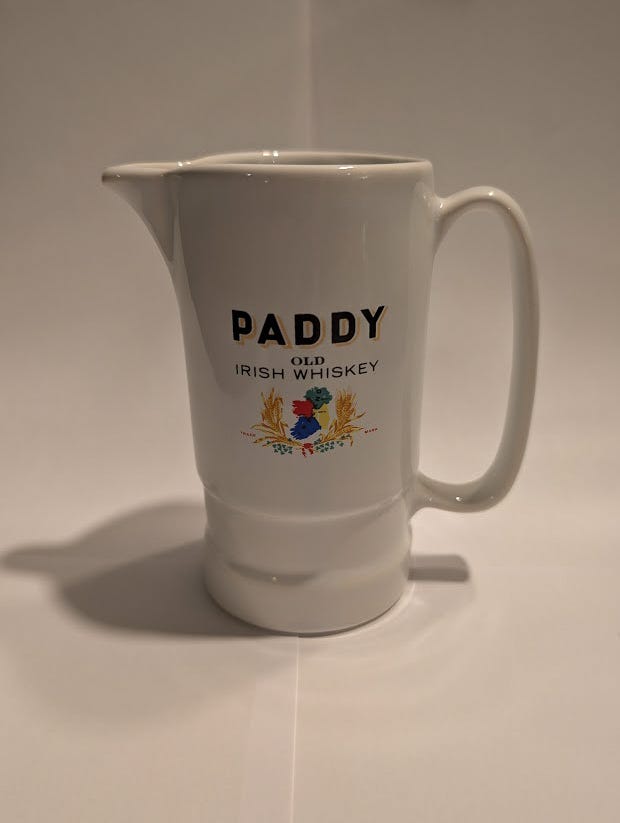
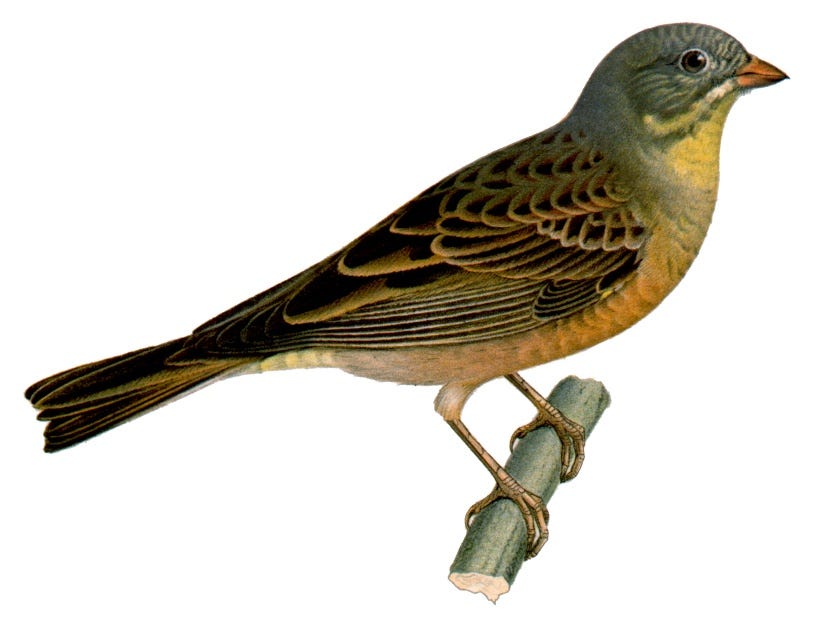

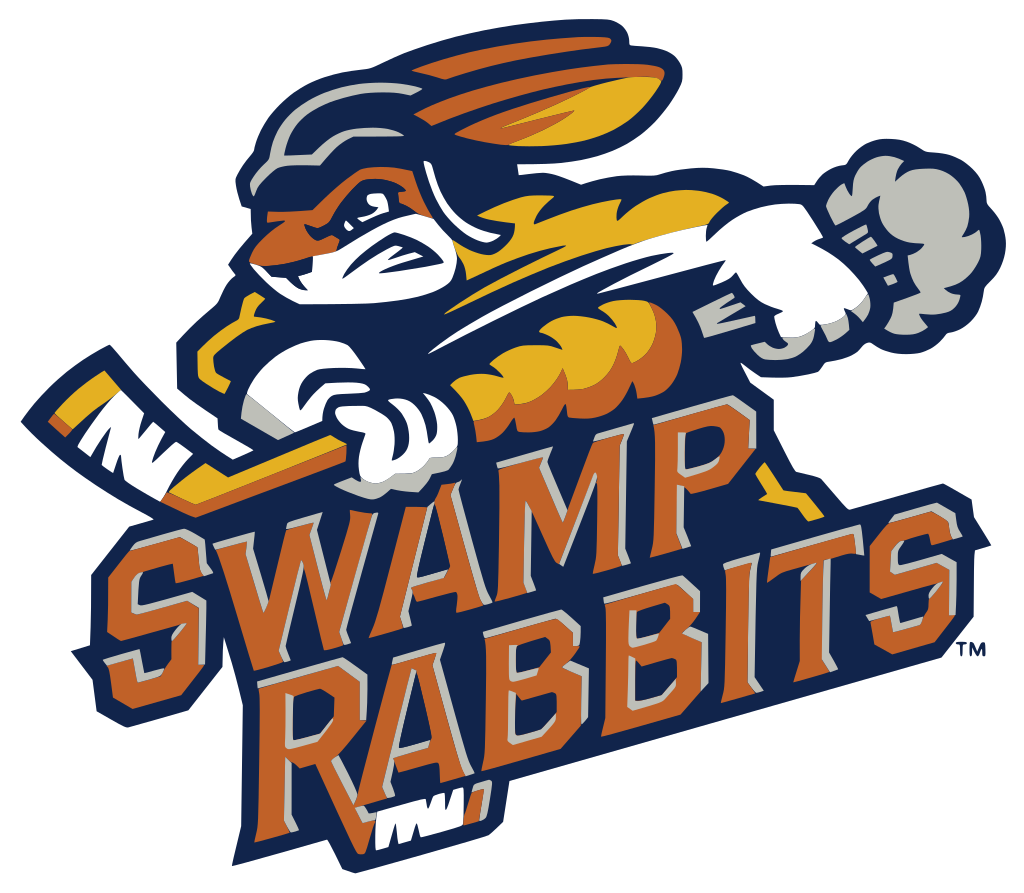
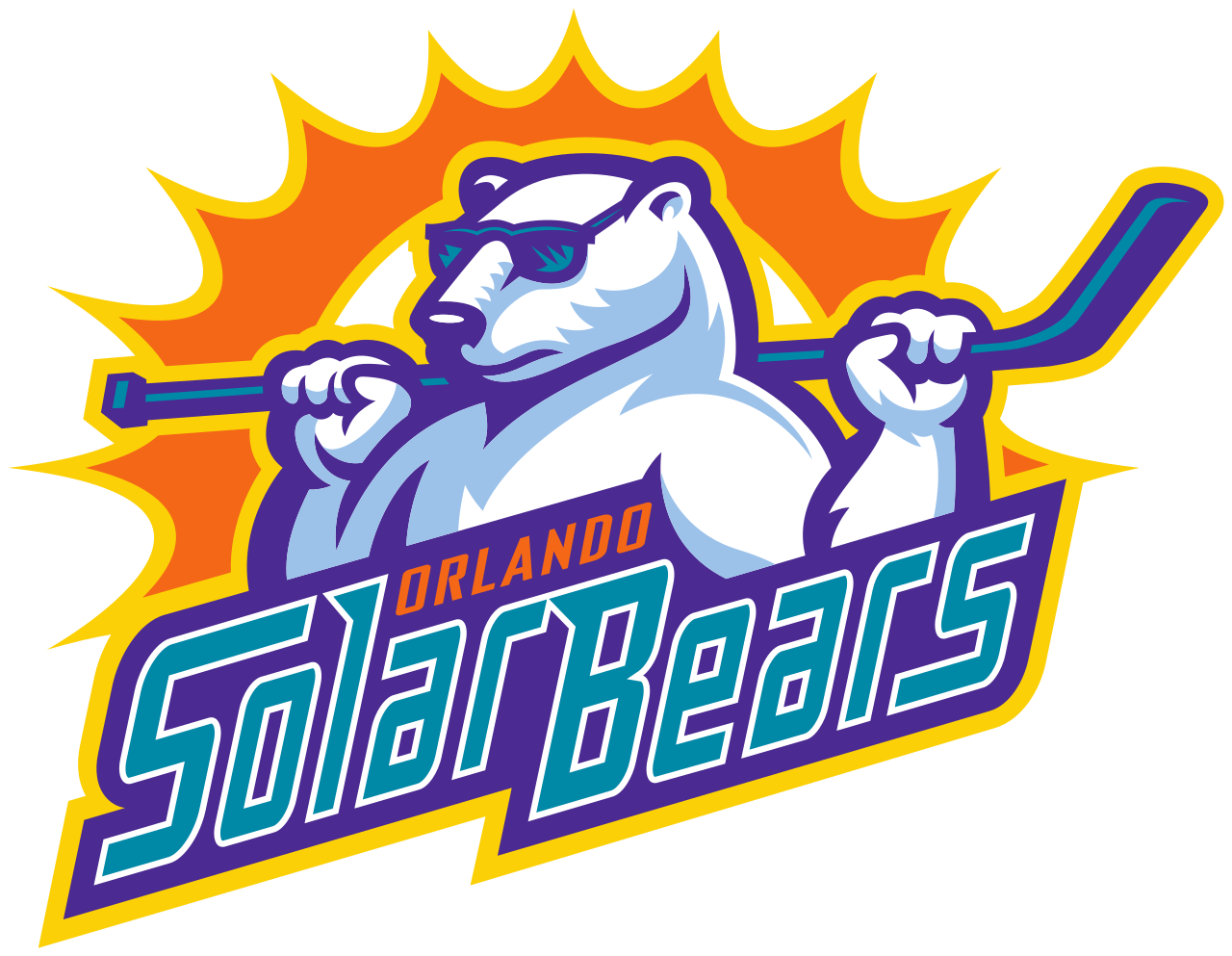

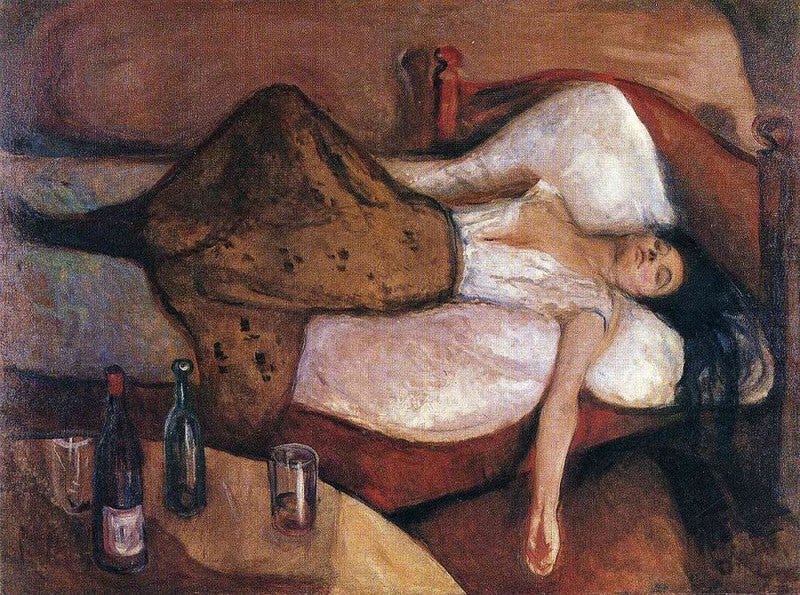
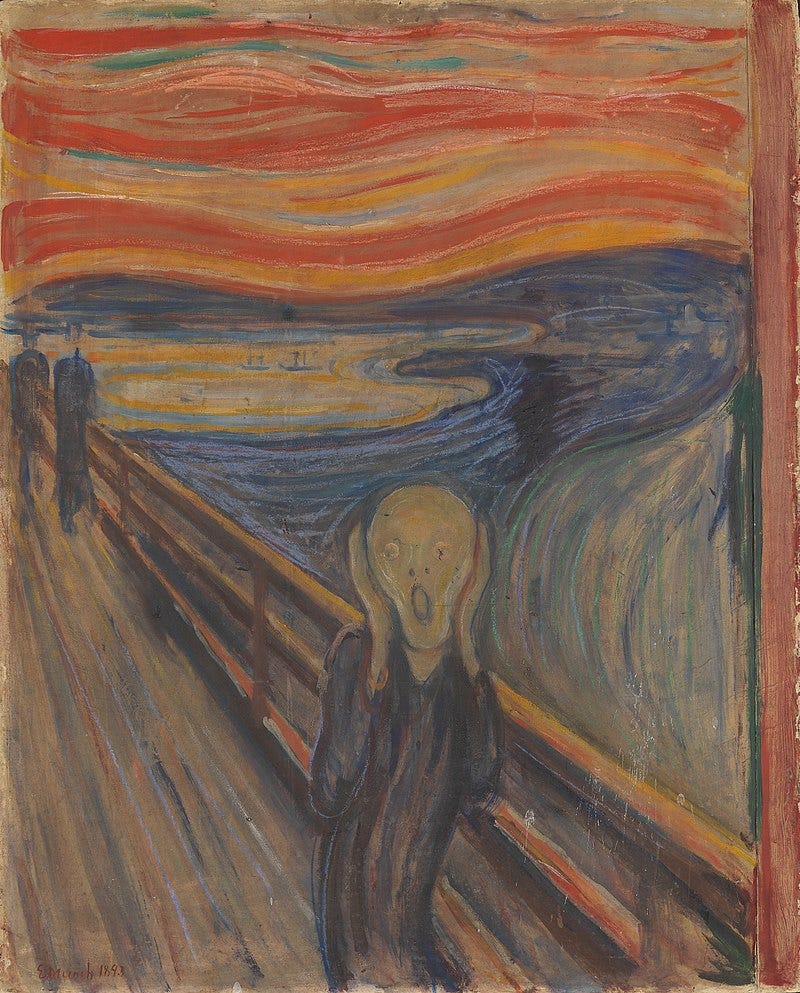
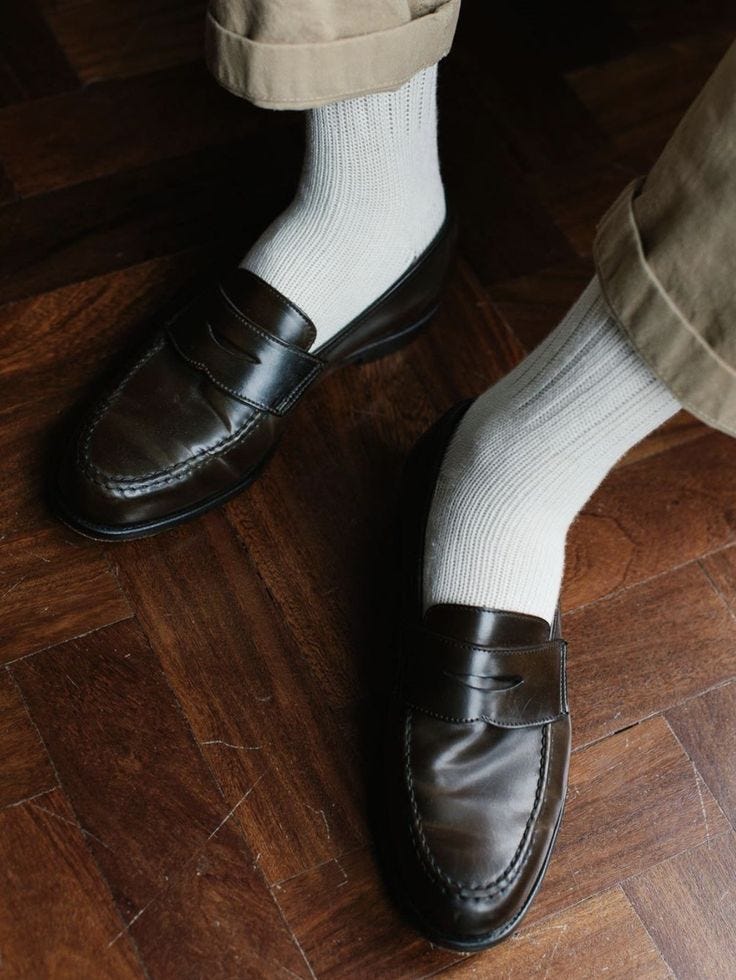
Pub jugs! Who knew!